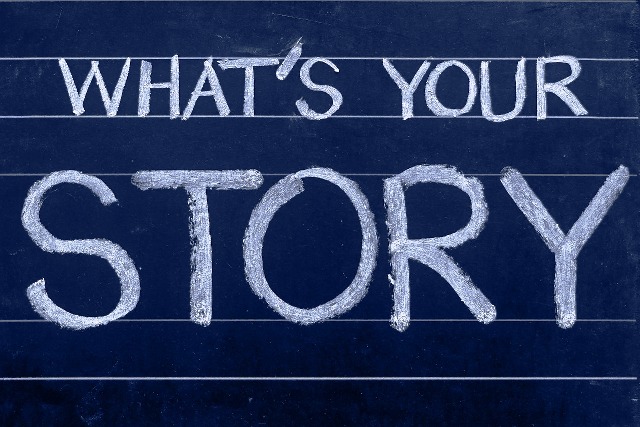For sale: baby shoes. Never worn.
When you read these six words, what feelings do they evoke? Don’t these six words immediately make us empathize with an unknown, grief-stricken woman? We can almost visualize the situation and our hearts go out to her.
Ernest Hemingway wrote this story, calling it a six-word novel. It shows the almost visceral effect stories can have on us. But why does it happen? In the introduction, I discussed how a chemical called oxytocin is released in the brain when we hear and ‘experience’ stories. Paul Zak’s team’s tests showed that oxytocin is the same chemical that is produced in our brains when we are trusted and that it motivates cooperation. This enhances the sense of empathy. So, it was no wonder that when stories were told prior to asking for charitable donations, listeners were more inclined to contribute.
Now, let’s delve a little deeper into the relationship between our brains and stories. Over the last few decades there has been a gigantic leap in our understanding of how our brains react to stories. Some fascinating work has been done in the areas of cognitive science, neurological science, evolutionary biology, development psychology and neural net modelling.
A brilliant book on this subject is Story Proof: The Science behind the Startling Power of Story by Kendall Haven. He pored over 350 books, seventy articles and over 1500 studies covering over 1,00,000 pages to understand how the human mind receives, processes and responds to stories. Every study he describes in the book is fascinating.
Here is a little experiment you can do to see how wired we are for stories. Have you ever been part of a meeting with a roomful of people who found their mobile screens more interesting than the discussion? Sure you have. The next time this happens, find the right opportunity and say something like ‘I remember six years ago . . .’ and stop. Observe what happens. Almost every head will rise and look at you. It is almost as if a town crier screams inside everyone’s brain ‘Look out! There may be a story coming.’
…
The proof of our predisposition to stories is apparent from the time we are born. As Haven reports, many researchers have studied the reaction and mental processes of babies and found that humans think in story terms since birth. In a seminal book on this subject, Acts of Meaning, psychologist Jerome Bruner reports on long years of clinical studies that have shown that we are born preprogrammed to search for, and to create meaning from, story elements.
All of you who have had children would definitely attest to that fact. Think back to what your child was able to do once he was able to string words together into a sentence. If you walked in and saw him looking guiltily at a broken vase and asked ‘how did this happen?’, did he say ‘I was running and hit the table and the vase fell and broke?’ Or did he say ‘Spiderman was fighting with the bad guys and during the fight the vase fell and broke?’
Chances are very high that if the child was as naughty as I was, he would have said the latter. Did you teach him how to craft stories? No. You had to teach him language, spelling, handwriting and mathematics but not how to tell stories.
Excerpted from Stories At Work by Indranil Chakraborty with permission from Penguin Random House India. The special tools, techniques and structures in this book will help you bring the power of stories into your day-to-day business communication.
 The author Indranil Chakraborty has combined three qualities to pioneer business storytelling in India: two decades of experience in leading teams and driving change at top firms like Unilever, Tata Group and Mahindra & Mahindra; a love for stories; and the entrepreneurial bug. His firm, StoryWorks, has helped organizations and leaders harness the power of stories to create and deliver impactful messages. Since 2013, using the same approach outlined in Stories at Work, he has trained more than 1,500 senior leaders in over 30 organizations, teaching them to be more effective in their communication.
The author Indranil Chakraborty has combined three qualities to pioneer business storytelling in India: two decades of experience in leading teams and driving change at top firms like Unilever, Tata Group and Mahindra & Mahindra; a love for stories; and the entrepreneurial bug. His firm, StoryWorks, has helped organizations and leaders harness the power of stories to create and deliver impactful messages. Since 2013, using the same approach outlined in Stories at Work, he has trained more than 1,500 senior leaders in over 30 organizations, teaching them to be more effective in their communication.
Views of the author are personal and do not necessarily represent the website’s views.
Thank you for reading the column until the very end. We appreciate the time you have given us. In addition, your thoughts and inputs will genuinely make a difference to us. Please do drop in a line and help us do better.
Regards,
The CSR Journal Team


